Sourdough pie crust has been on my back burner for some time now!
I finally had the time and opportunity to play around with my recipe and develop the perfect sweet and buttery sourdough pie crust. Even though I wish I’d done it long ago, now I can give you a real traditionally fermented pie crust for all your sweet or fruity pies.
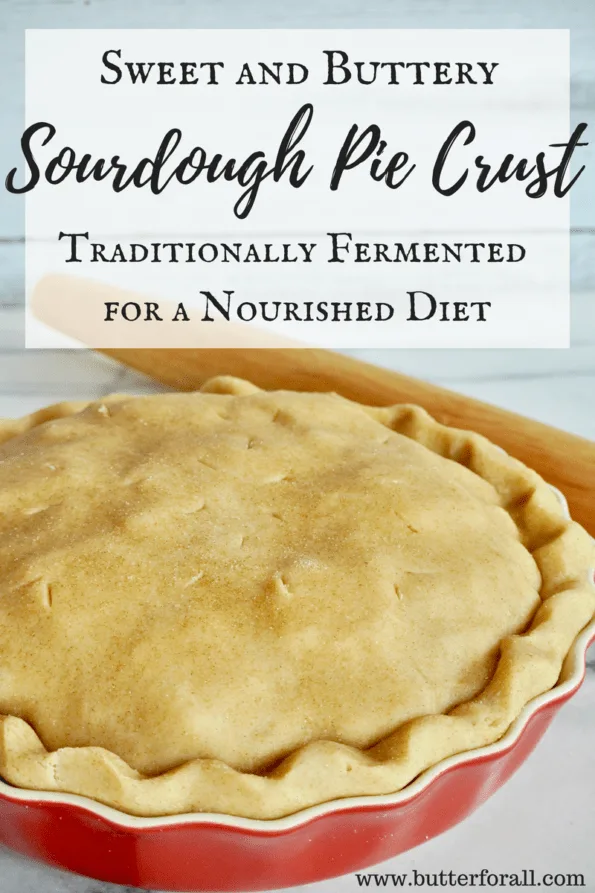
The Dough Is Awesome to Work With.
The way this pie dough is made is pretty unique. Melted butter is mixed with flour, sugar, and sourdough starter. During mixing there is definitely a little bit of gluten development so the dough is extremely easy to roll out and shape. It is not as flaky as my Ultimate Lard Pie Crust but the flavor is all butter, with the added health benefit of traditionally fermenting the grains.
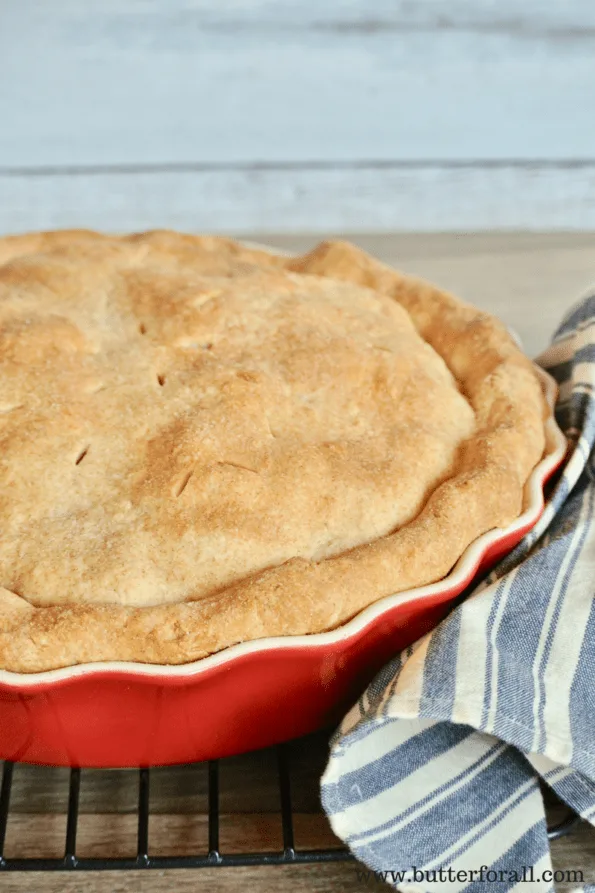
For tips on how to roll out a pie crust and make a perfect pie, please see How To Make the Perfect Covered Fruit Pie, Every Time!
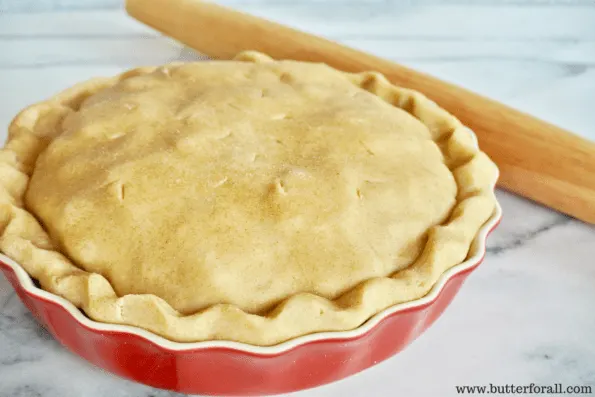
Fermentation: The Key to Healthy Grains!
You know by now that I ferment, soak or sprout all my grains. This is the way humans had been consuming grains for countless centuries before modern times. Come to find out, it’s the way we still should be preparing our grains. The soaking/souring/sprouting process reduces phytic acid and makes the nutrients in grains more bio-available. If you are going to eat wheat, make sure it is soaked, soured, or sprouted!
Add these important books to your library to learn more about how traditional people ate and why it’s important to revive these ancient food-ways.
This Recipe Makes Two Pie Crusts, or a Top and Bottom for a Covered Pie.
If you only need one crust, consider making these tart and jammy Cranberry and Sourdough Pastry Pinwheels with the other half recipe. This has become our new holiday tradition!

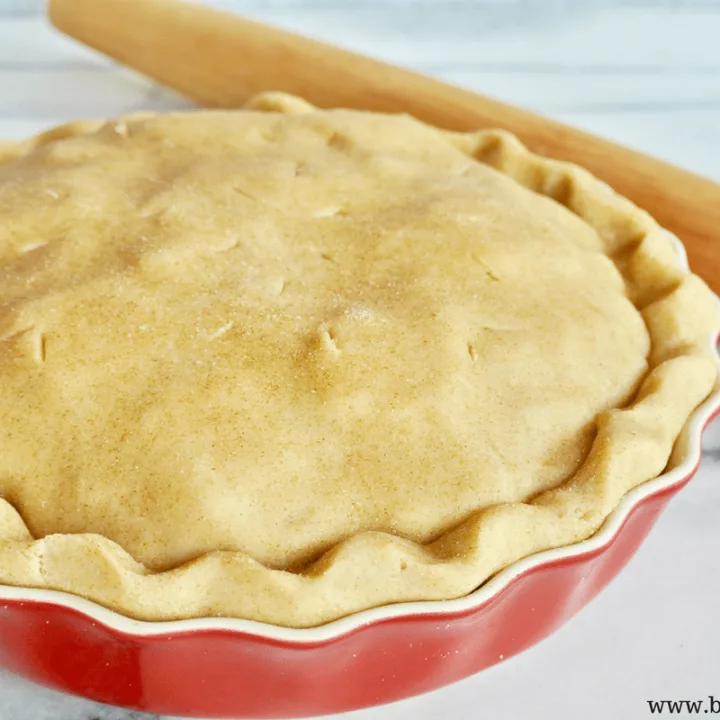
Sweet and Buttery Sourdough Pie Crust – Traditionally Fermented for a Nourished Diet
Ingredients
- 375 grams (3 cups) organic all-purpose flour
- 227 grams (1 cup) butter, melted
- 166 grams (2/3 cup) active sourdough starter at 100% hydration, stirred down
- 40 grams (1/4 cup) coconut sugar or unrefined sweetener of choice
- 6 grams (1 teaspoon) salt
- 1/2 cup organic all-purpose flour, for dusting
- Water as needed
Instructions
The Day Before
The Pastry
- Mix the flour, sugar, and salt together in a ceramic or glass bowl.
- Add the sourdough starter and melted butter. Mix everything until just combined. If the dough isn't coiming together or seems too dry, drizzle cold water into the dough until it is completely moistened and sticking together.
- Cover the bowl and let the dough ferment at room temperature for 4 to 5 hours.
- Divide the dough in half and shape each half into a round disk. Wrap each disk and refrigerate for at least 12 or up to 48 hours. Note that the dough will get more sour the longer it ferments.
The Next Morning
- Remove the dough from the refrigerator and let it soften slightly at room temperature, about 30 minutes to 1 hour.
- Preheat your oven to 375°F.
- Dust your surface with flour and roll each disk out into a 12 by 14-inch diameter. Trim the edges and place the bottom crust in your pie pan.
- Fill the bottom pie shell with your filling of choice and either crimp the edges or add the top crust. See my post How To Make the Perfect Covered Fruit Pie, Every Time.
- Bake the pie at 375°F for 15 minutes. Turn the oven down to 350°F and continue baking for 45 to 60 more minutes, or follow the instructions based on your pie filling.
- Check on your pie after it's been in the oven for 45 minutes. If the crust is getting dark, use narrow strips of foil and gently form them around the outer crust to prevent burning.
- Remove the pie from the oven and let it cool on a wire rack before serving.
Notes
This recipe makes two crusts, or, a top and bottom crust. Once the dough has been fermented overnight in the refrigerator it can be frozen for future use.
In cool weather or a cool home it may not be necessary to refrigerate the dough.
Want To Learn Everything About Sourdough?
Start with this free guide:
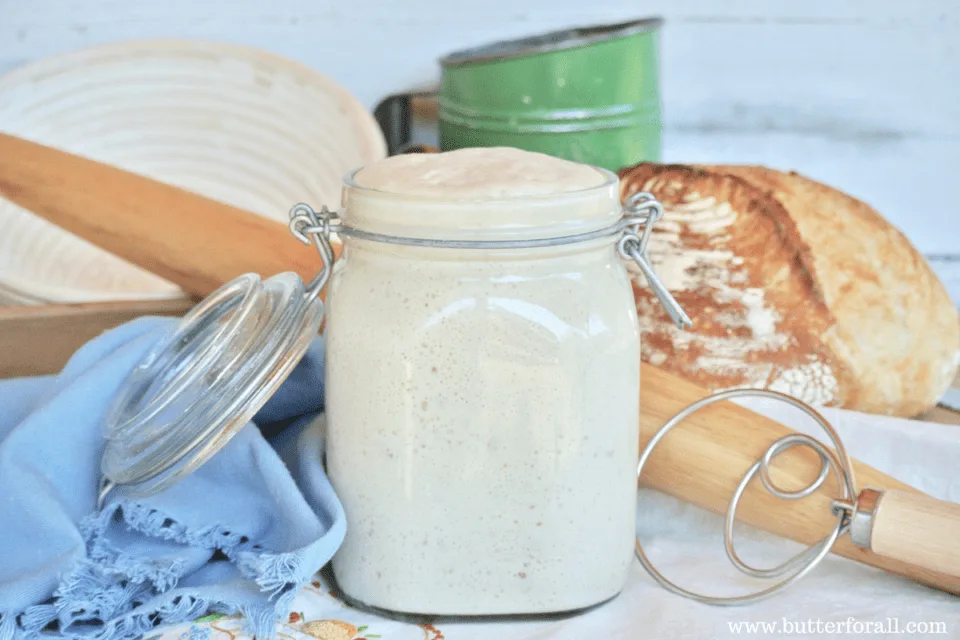
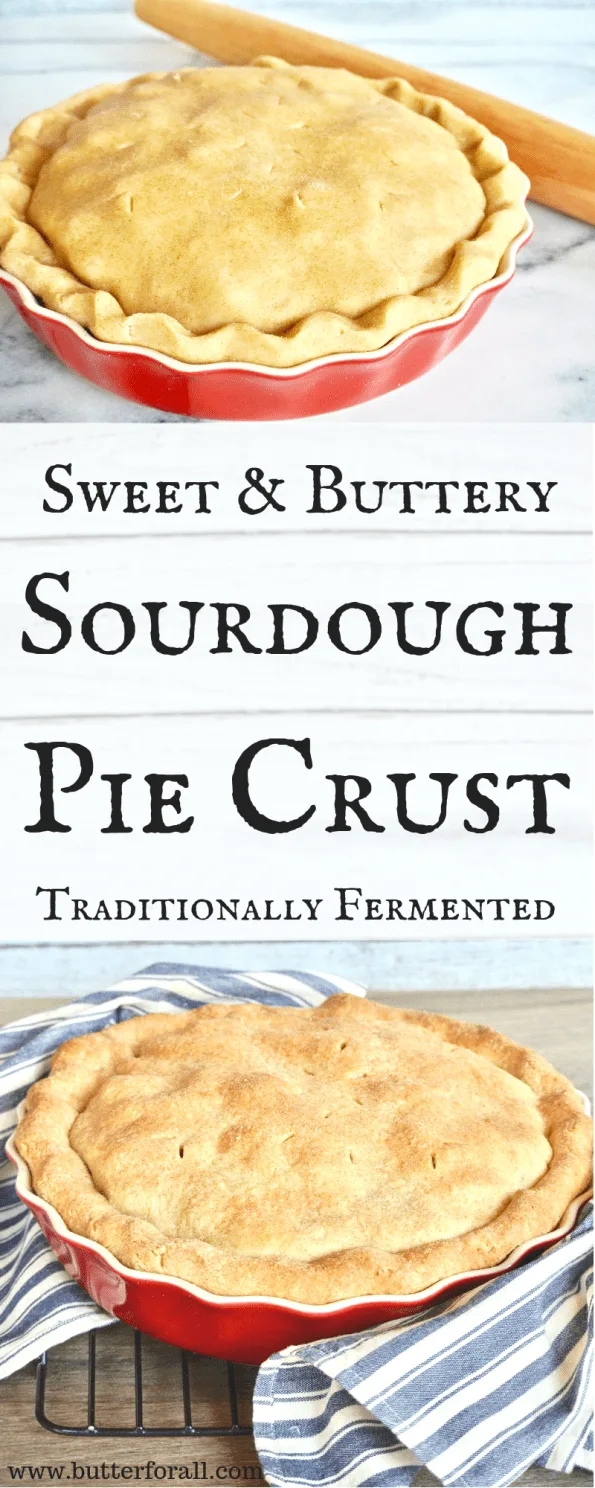




Tony
Sunday 19th of May 2024
After some experimentation I've developed a method for fermenting a pie crust that doesn't require melting the butter.
The key is dissolving the sourdough starter into the water in a diluted enough form that it doesn't need to be worked into the pie dough. Then I let the dough ferment at room temp for several hours before chilling.
One pie crust: - 115.25g (1.25 cups) AP or pastry flour - 1 tsp granulated sugar - 1.5 tsp cornstarch - 1/2 tsp salt - 140g (10 Tbsp) unsalted butter, CHILLED and cubed - 1/4 - 1/3 cup (60-80 g) chilled water - 40g+ very ripe sourdough starter
When measuring out and pre-chilling the other pie ingredients, mix the starter into the water until it's completely dissolved and then chill in the fridge. It may need to be mixed again before adding to the pie dough as the starter can settle and stick to the bottom.
Then just make the dough as usual. I usually let my dough ferment at room temp for at least 5 hours or until it takes on that "yogurty" aroma.
I hope you find this useful.
Jenny
Saturday 18th of January 2025
@Tony, Thanks for sharing. I really look forward to giving this a try!
Butter For All
Monday 3rd of June 2024
Tony!
This is such a great compliment to this recipe. Thank you so much for sharing it not only with me but with all my readers! I really appreciate the thoughtful and detailed recipe.
My warmest regards,
Courtney
Juliet
Monday 26th of December 2022
Thank you for a pastry recipe that’s actually long fermented! Is 4 hours at room temp enough to ferment the dough? Doesn’t fermentation pretty much stop in the fridge? Would it be better/healthier to leave at room temp 8-12 hours and then in the fridge until firm? Do you think this would hold up in my deep dish springform pan?
Butter For All
Friday 30th of December 2022
Hi Juliet,
Fermentation will definitely start within 4 hours, but will slow with refrigeration. It's really personal preference. I've done both. During the cold weather months I leave it out on the counter overnight and shape it without refrigeration. During summer, it can get too sour for sweet pies if left out overnight.
This pastry dough is really sturdy so yes, I believe it would do well in a springform!
Best,
Courtney
Samantha
Wednesday 16th of November 2022
Hello!!
I plan on freezing the dough before I use it. Should I roll it out first, or just freeze in the ball from when it ferments in the fridge?
Butter For All
Wednesday 16th of November 2022
Hi Samantha!
No need to roll it out, just freeze it in the ball and roll it when it's defrosted.
Enjoy!
Courtney
Blaine
Sunday 21st of November 2021
Hello :) do you think this would work with goose fat or something similar?
Butter For All
Monday 22nd of November 2021
Hi Blaine!
That sounds incredible! I think duck or goose would be killer. But I like fats and don't mind a little flavor! The fat is added melted as a liquid so really any traditional fat could be used from a technique perspective.
Please let me know how it turns out!
Courtney
Tari A
Saturday 6th of November 2021
I just made black raspberry/cream cheese pop tarts with this recipe. Yum! I did use a combo of whole wheat pastry and a little spelt flour for the dough. I made a little adjustment in the flour (less), but it was still a little dry. I’ll do some more adjustments next time. I bake enough with whole grains to expect this, so I’m good with it. I saw this idea on another site, but wanted to try it with your dough. These are so much better than store bought (which I hate) and healthier too. The pastry was delicious, so I’m going to try it for my next pie.
Butter For All
Monday 22nd of November 2021
Hi Tari!
Your pop tarts sound incredible! I'd love to see a picture!
Thanks so much for the nice feedback, I really appreciate the support!
Courtney